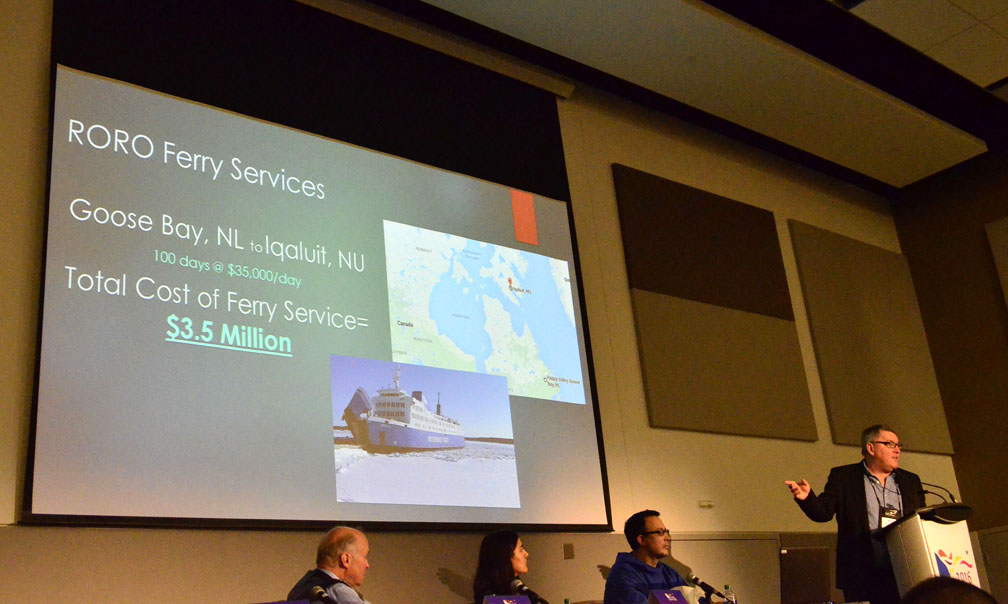High costs killed the dream of a Iqaluit-Labrador vehicle ferry, says Nunavut minister
Lorne Kusugak, the minister of Community and Government Services, said the infrastructure for a roll-on, roll-off ferry would've cost too much.

Due to high construction costs, Iqaluit’s new deepsea port, now under construction, can’t accommodate a once-dreamed-of Iqaluit-Labrador vehicle ferry service, Lorne Kusugak, the minister of Community and Government Services said this week.
Kusugak made the remark in response to a question Iqaluit-Manirajak MLA Adam Lightstone asked on Tuesday, May 28.
In his question, Lightstone said he’s surprised to have learned recently that the new port won’t include the “roll-on-roll-off” infrastructure that would let vehicles drive on and off ships anchored at the Iqaluit port.
He said he got that information after he asked a question at a recent information session in Iqaluit.
“To my surprise, the answer was that although Economic Development and Transportation did include roll-on-roll-off specs to the project scope, it was not included in the final designs,” Lightstone said.
Kusugak said, however, that in the end, GN officials determined those specs would cost too much.
“It would have been nice to have roll-on-roll-off technology on the site, but looking at the cost and benefits, it did not match, so we didn’t include it,” said Kusugak, whose department is responsible for contracting and procurement.
Back in February 2016, Nunatsiaq News reported on a big pitch that Peter Woodward, the vice-president of operations for the Woodward Group of Companies, had made at the Northern Lights trade show in Ottawa that year.
Woodward told delegates in a presentation that, because of the GN decision to build a deepsea port, an Iqaluit-Labrador vehicle ferry service would soon follow.
Woodward’s company, which holds a contract to deliver fuel to Nunavut every year, has made no secret of its desire to launch a dry cargo and ferry service between Iqaluit and the Port of Goose Bay.
And Woodward bragged that once his company’s proposed vehicle ferry service got up and running, likely by 2020 or 2021, a typical Iqaluit ferry passenger would be able to drive a truck onto the ferry, sail to Happy Valley-Goose Bay, load up with low-cost groceries, then take the ferry back to Iqaluit.
But that dream vanished after Nunavut’s Department of Economic Development and Transportation reviewed the numbers.
“It’s very expensive to build that site and just for the roll-on-roll-off alone, it would cost millions and millions of dollars. We have to look at the whole project, the cost, the pros and cons, the benefits, and how we can better use the money,” Kusugak said.
That means that when the GN awarded the construction contract for the project to Tower Arctic in May of 2018, provision for roll-on-roll-off specifications would have been deleted from the plan.
In a package deal worth about $89 million, Tower’s contracts cover construction of a small-craft harbour at Pond Inlet, and a deepsea port and small-craft harbour in Iqaluit.
The GN expects all work on the Iqaluit projects to be completed by 2021.
Right now, sealift vessels are able to offload cargo at Iqaluit for only a few hours each day, during high tide.
But the new Iqaluit port will provide 24-hour-a-day access for ships to offload cargo. A new four-hectare laydown area will be almost double the size of the current laydown area on the beach, and incoming cargo will be put directly onto the wharf using cranes.